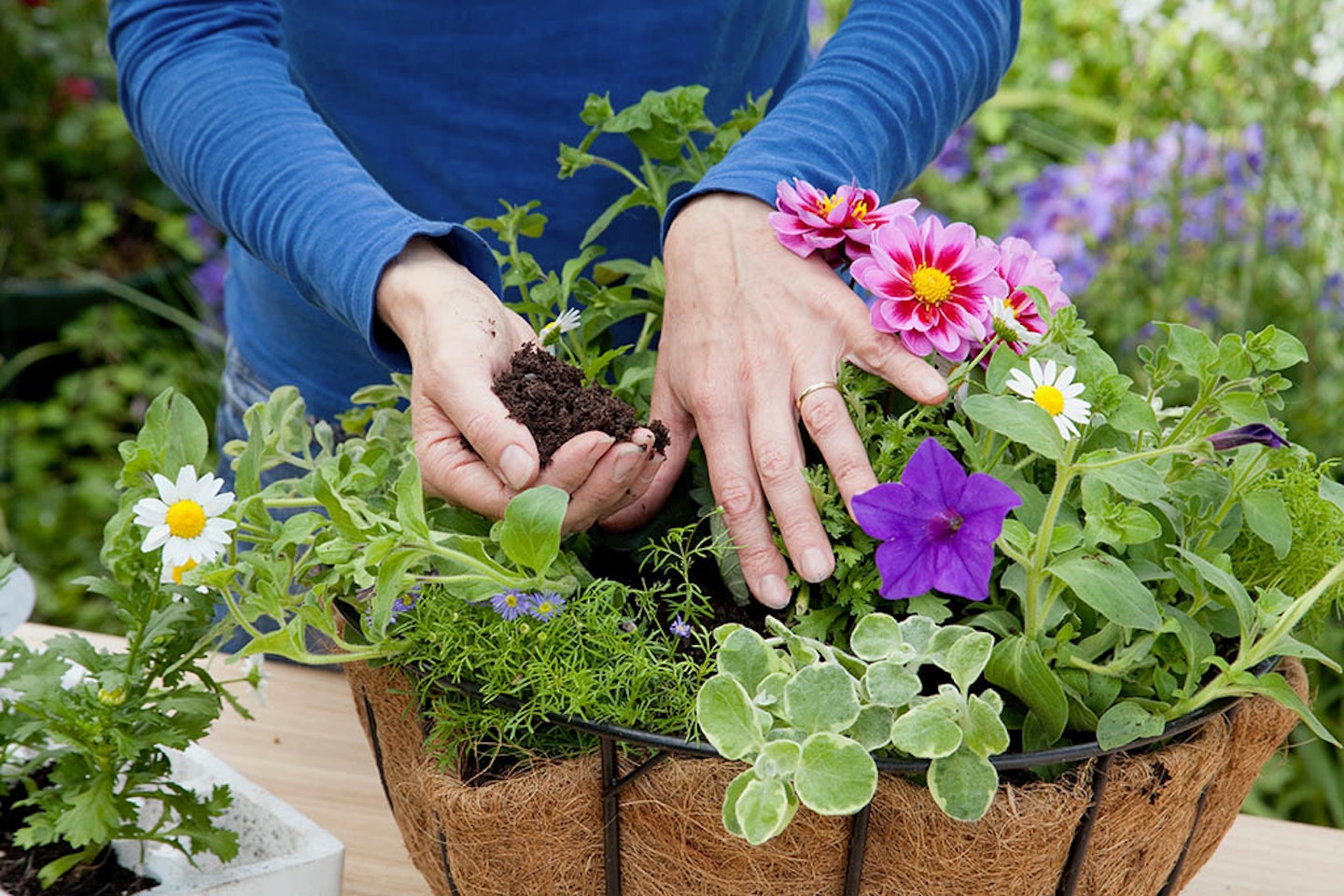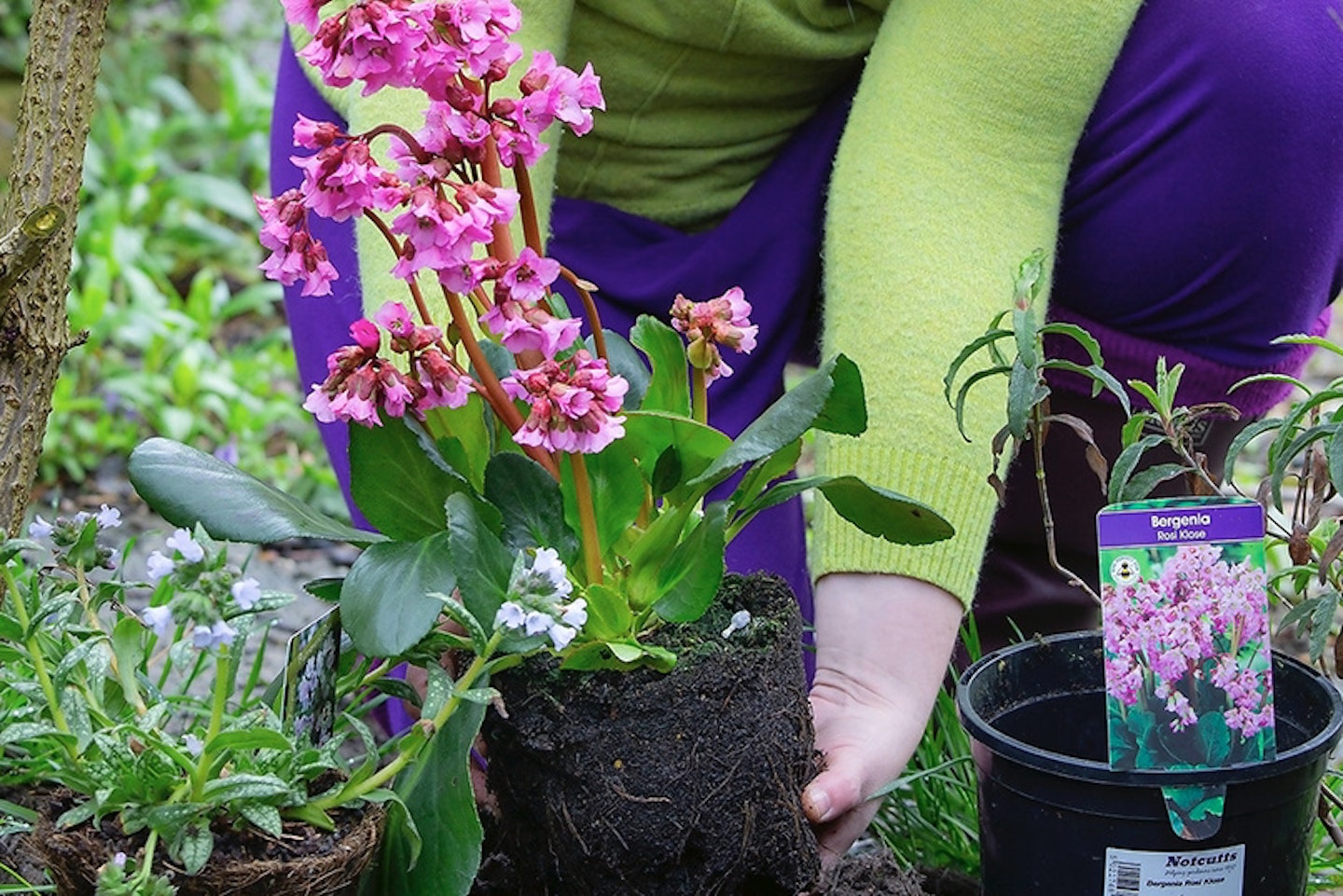With plants bursting into new growth, it’s a great time to get planting pots of climbing annuals and preparing hanging baskets. It’s also worth keeping on top of luxuriant growth with some judicious pruning
Give perennials the Chelsea chop
Chopping back herbaceous perennials might seem like a strange thing to do when plants are gathering momentum and putting on lots of new growth in spring. However, it pays dividends because it makes them more compact and sturdier. Reducing the height of the plant by up to half helps lessen the effect of strong winds and prevents plants from becoming ‘top heavy’ or congested. It can also extend the flowering season, even on the same plant. Try experimenting by cutting back half the stems, then the uncut stems will flower first, followed by the cut stems as they catch up later on.
Use sharp garden shears to cut large plants quickly or secateurs if you want to cut back every other stem in the same clump to ‘thin out’ the plant, giving more room for flowering stems and encouraging a later, fresh flush of flowers.
This method is suitable for the summer-flowering perennials featured and could also be used for sedum, Phlox paniculata, monarda, rudbeckia and aster.

Prepare hanging baskets
Hanging baskets instantly ‘green up’ walls and add character to buildings, but it’s a little early to put them out just yet. However, you can plant them up and keep them in a sheltered spot until the end of the month, which allows the plants to fill out before hanging baskets in their final position. Mix in water-retaining granules to the compost or choose a mix with a water-retaining agent added to help conserve moisture. Check the weather forecast and bring the basket indoors again or cover with fleece if a late frost is forecast.
Pull up forget-me-nots
Spring wouldn’t be spring without the delicate, frothy clouds of forget-me-not blooms. However, these plants can take over if left unchecked so loosen the soil around any that are growing into your other plants or taking up too much room. Then pull them up by hand and put them on the compost heap.
Freshen up cordylines
Cordylines are invaluable for adding vibrant colour to a sheltered corner of the patio all year round, but can look a bit tatty by spring. A few quick fixes will soon get them back in shape.
-
Pull off withering, brown leaves at the base of the plant. They should come off with a sharp downwards pull, or carefully trim with secateurs.
-
Remove weeds growing around the base of the plant and top up the compost level if it has sunk.
-
If there is plenty of space around the plant, consider underplanting for a fuller display. Drought-tolerant hebes are a good choice for a pot that’s situated in a sunny spot.
Keep a patch of dandelions
Dandelions may be considered weeds but they have a lot to offer, especially in providing pollen for bees and hoverflies. Consider leaving an area where they are allowed to flower, then deadhead before they set seed to control their spread. As well as adding vibrant colour to the garden, their young leaves make a tasty addition to a salad.

Fill gaps in shady areas
Shady corners of the garden become more noticeable as summer approaches and a cooler corner is a welcome place to spend time on hot days. If your shady area needs a spruce up, add some tough easy-to-grow foliage plants that will keep looking lush and fill out the space for the rest of the year. Groundcover plants that grow well in shade include pink spring-flowering bergenias (above); periwinkle (vinca), which trails well and also flowers almost every month of the year; and pulmonaria, which has attractive patterned leaves in summer after its pretty, bee-friendly spring blossom.
Watch the weather
The long daylight hours and increased warmth of May make plants grow rapidly but some caution is needed. There can still be frosts and cold winds so tender plants may need covering or keeping indoors until the end of the month. Potted plants also need daily checking for water.
